
In case you missed part one of this year's shots column, be sure to catch up before diving into the final five here today.
I glanced back at some prior lists yesterday for formatting reasons and was surprised to note that my closing commentary on the 2010 collective was remarkably similar to the sentiments I conveyed yesterday, namely the notion that a year thin on striking singular images makes my appreciation of the work that much stronger because of what goes into digging them up. Interesting.
Regardless, last year I was remiss in leaving out a few honorable mentions, which had been a bit of a tradition, so before getting to today's run-down and the top five shots of 2011, let's take a quick look at a few of the images that just missed making the cut.
For instance, I can't deny the vertigo-inducing effect of rising above Tom Cruise and looking down the face of the Burj Khalifa in “Mission: Impossible – Ghost Protocol.” The closing frame of “The Descendants,” meanwhile, ties up its narratively warmly and succinctly with three members of a family snuggled under remembrance of another (as the blanket in the shot is the one we see in the hospital, in case you missed that).
The overhead glimpse of a vicious warrior in “13 Assassins” preparing for further combat as crimson blood trickles passed him in a stream stuck out to me when I saw the film earlier this year. And a long, patient shot of Lisa Cohen in the distance walking out into the living, breathing world as she learns its harsher ways really connected in “Margaret” (though I can't sample it for you here as screeners of the film weren't sent to press).
And then, of course, there are plenty of other stunning frames from “The Tree of Life,” whether they be owed to effects (like a vision of the earth as a dot against a fiery sun, embossing the film's central theme) or simply beautiful staging and photography (like the reflected image of Mrs. O'Brien moving in one direction outside their home, as her husband moves in the other direction inside, a wonderfully expressive beat that accents yet another theme).
There are always many to be assessed, but they all give way to 10. And today, to five. So let's dive in…
#5
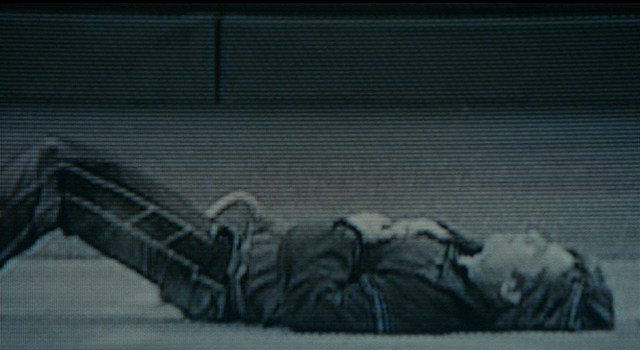
“MONEYBALL”
Director of Photography: Wally Pfister
“Our earliest conversations about the style and look of the film was that Bennett [Miller] wanted to have it grounded with a real indie feel, regardless of who we were putting on the screen and what the subject matter was. We looked at 'Sugar' and a lot of other great stuff. Bennett described the locker room, the weight room, the hallways as the submarine, and the stadium was 'above water,' and that made it very clear to us where the delineation was and the difference between those two environments.”
–Wally Pfister, Movie City News*
I found “Moneyball” to be a meticulously crafted film and was happy to see its film editing singled out by the Academy this year. The construction of the film, scene-to-scene, is very much a part of its power. But Wally Pfister's photography was award-worthy, too, finding the right moments to accentuate precise relationships of character with environment. (And he's our returning champion this year!)
One running current I found compelling throughout the film was Billy Beane's (Brad Pitt) relationship with the baseball field. He nearly jinxes his team's win streak by returning to the field at one point, while a torrential downpour greets him at Fenway Park during a job interview. It's as if he's not welcome on the diamond, and his place is in the bowels of a stadium, changing the game.
But one moment toward the end of the film ties that thread together nicely as Beane walks out onto the grass of Oakland's Coliseum and lies on the ground, finally able to have that intimacy with the field. One shot preceding it, of Beane walking out (used for the poster) is aesthetically rich, but this one has more feeling, particularly since its viewed as security camera footage, as if we're peeking in on this private, important moment in the character's life.
#4
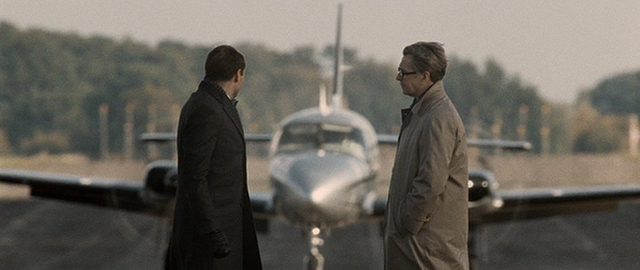
“TINKER, TAILOR, SOLDIER, SPY”
Director of Photography: Hoyte van Hoytema
“We wanted to build up the paranoia in one single shot as a real time build-up, adding elements progressively: starting from them getting out of the car, the car suddenly speeding off and during that dialogue the plane landing. It was shot on a ridiculously long lens to tighten the actions happening on the various planes. Throughout the film, the camera is observant at times, almost voyeuristic. We wanted to create a feeling that people where being watched by yet another pair of unknown eyes. The whole MI6 world was primarily about people peeping on each other, and people moving around in secrecy. We tried to make the language very unsettling at times.”
–Hoyte van Hoytema
So much of Tomas Alfredson's “Tinker, Tailor, Soldier, Spy” is about a sense of paranoia and heightened awareness of “the other.” And one image from the film really nailed that vibe with an unsettling mix of performance, framing and background action.
As Gary Oldman's George Smiley lays it all out to fellow British Secret Intelligence Service member Toby Esterhase (David Dencik) and how he's been played by Soviet spymaster Karla, a twin propeller airplane lands in the background. The shot is held as the airplane wheels to a stop, Smiley never looking back once but Esterhase ever aware.
It's an arresting image because of the long lens used, making the airplane appear closer than it is throughout. But it also builds on that claustrophobic, unsettling atmosphere threaded throughout. It's really become something of an identifying frame from the film, actually. (Hoytema's work in 2008's “Let the Right One In” turned up in the #1 spot that year.)
#3
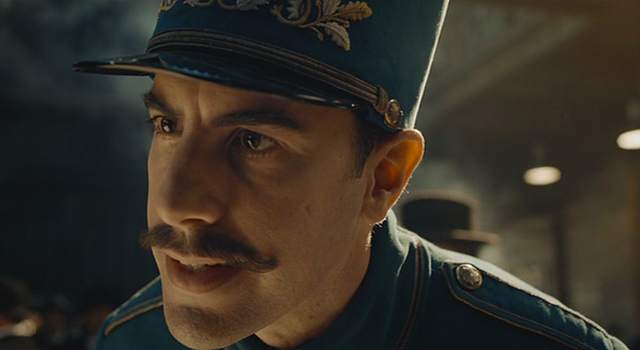
“HUGO”
Director of Photography: Robert Richardson
“With a 3D rig, you have a very large camera and matte box, so technically you're looking at something that's like two feet. It's an extraordinarily large shape. What happened was Sacha [Baron Cohen] was looking toward Asa [Butterfield], and he began to lean down toward Asa. But because his lean requires the camera to move in order to frame him, the matte box and every other element of the camera moved along. So he kept continuing to move deeper, and that shot became itself because Sacha had to reach Asa, but he couldn't see him by nature of the technical properties of the camera rig. After we saw that, Marty decided he would make it a part of what he was doing.”
–Robert Richardson
Martin Scorsese's leap not only to 3D filmmaking, but to fully endorsing it and its place in the progression of cinema, was one of the bigger stories of the year, I feel. And in “Hugo,” he went to great lengths to employ the technology as a story-serving device, as opposed to a mere gimmick.
For cinephiles, it's already intriguing that Scorsese would go there. But to bring his trusted and talented frequent collaborator Robert Richardson along for the ride was icing on the cake.
A number of images were fetching for this reason and that. And even without the 3D, Richardson's color palette is a gorgeous one. But I felt that the unsettling effect a shot of actor Sacha Baron Cohen moving closer and closer to the camera as he interrogates the titular character, his face pushing further and further into the audience, really stuck out. Funny that, according to Richardson, it was an effect discovered purely by accident. (Richardson showed up on last year's list with a shot from “Shutter Island.”)
#2
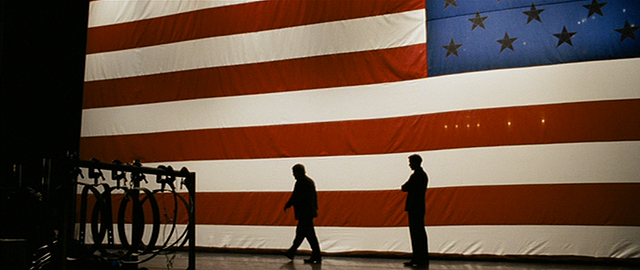
“THE IDES OF MARCH”
Director of Photography: Phedon Papamichael
“It's the two sides of the coin. In front of it, ironically, he's giving his speech at the same time. He's selling and representing the facade, and in the back you have the sort of inner unraveling of the inner doings of the machine. That was not preconceived too much. That flag went up and then when I lit the stage we saw it had this transparent value. I said to Clooney, 'We've definitely got to stage something back here and play these small figures silhouetted.' It's almost like the anti-'Patton' shot. It sort of naturally fell in place but it just applies, also, so perfectly.”
–Phedon Papamichael
George Clooney's “The Ides of March” was unfortunately cast aside for the most part this season (though I'm thankful it was remembered by the writers). I personally always felt Phedon Papamichael's photography was exemplary, finding slick but purposeful ways to capture the rather straightforward narrative.
The shot of campaign consultants Stephen Myers (Ryan Gosling) and Paul Zara (Philip Seymour Hoffman) standing behind an American flag as Clooney's political candidate gives a speech to a crowd on the other side is almost too obvious. (Indeed, an LA Times piece looking to crib off this column's conceit already covered it a bit.) But it's also too good to pass up.
The ideas are clear and striking: the men behind politics, in the shadows, pulling the strings. And as the quote above illustrates, it's a shot that was purely suggested by the production design of the film, a great illustration of synergy in filmmaking.
#1
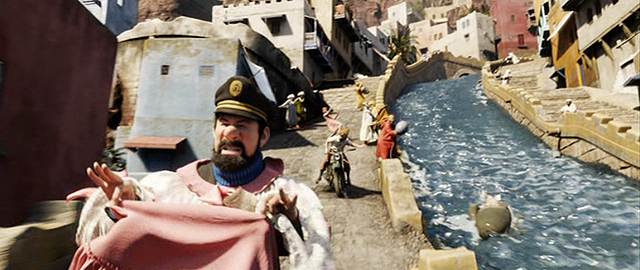
“THE ADVENTURES OF TINTIN”
Previsualization Supervisor: Jamie Beard
“When we started animating ideas for Steven [Spielberg] and Peter [Jackson], years ago, we would do it with a single camera, no editing, mainly so we could show the idea and not lock Steven into anything. By doing that it made us often have to compose with a lot of deep staging and complex choreography. Buster Keaton was a huge inspiration for us. He would often keep the camera rolling and do very complex deep staging. When we started to try and edit them together, what Steven realized was that he really loved that single camera technique, particularly for this sequence. So he actually threw down the gauntlet for us. He loves the single camera technique, which he's used since “Duel”; he loves keeping the camera rolling so that you don't have the chance to blink.”
–Jamie Beard
I'm very aware: this is cheating. I've never included or really considered animated films for this annual piece because it goes against the grain of its intention: spotlighting photography and photographers.
However, as previs supervisor Jamie Beard makes clear above (and he was ultimately THE best person to talk to about this shot), this stunning moment from Steven Spielberg's “The Adventures of Tintin” — a single “take” motorbike chase through the stepped streets of a Moroccan village — was fully suggested by camera movement. And since the sequence began with practical filmmaking elements — cameras, actors, staging, etc. — it felt like the cheating was okay.
And regardless, the exhilaration of the shot can't be dismissed. “Tintin” was one of the year's best films, a burst of creative cinema from a mind desperate for decades to capture moments just like this one, but inhibited by the limitations of the medium. Here he and his collaborators cooked up the defining image of the film, the defining element of that desperate imagination. How could it not be the shot of the year?
And there we have it! The top 10 shots of 2011. Feel free to discuss these and your thoughts on them in the comments section below, and as always, do offer up your own choices for images that might not have made the list.
*Wally Pfister was unavailable for original comment.
The top 10 shots of 2011: part one
***


 Archives
Archives